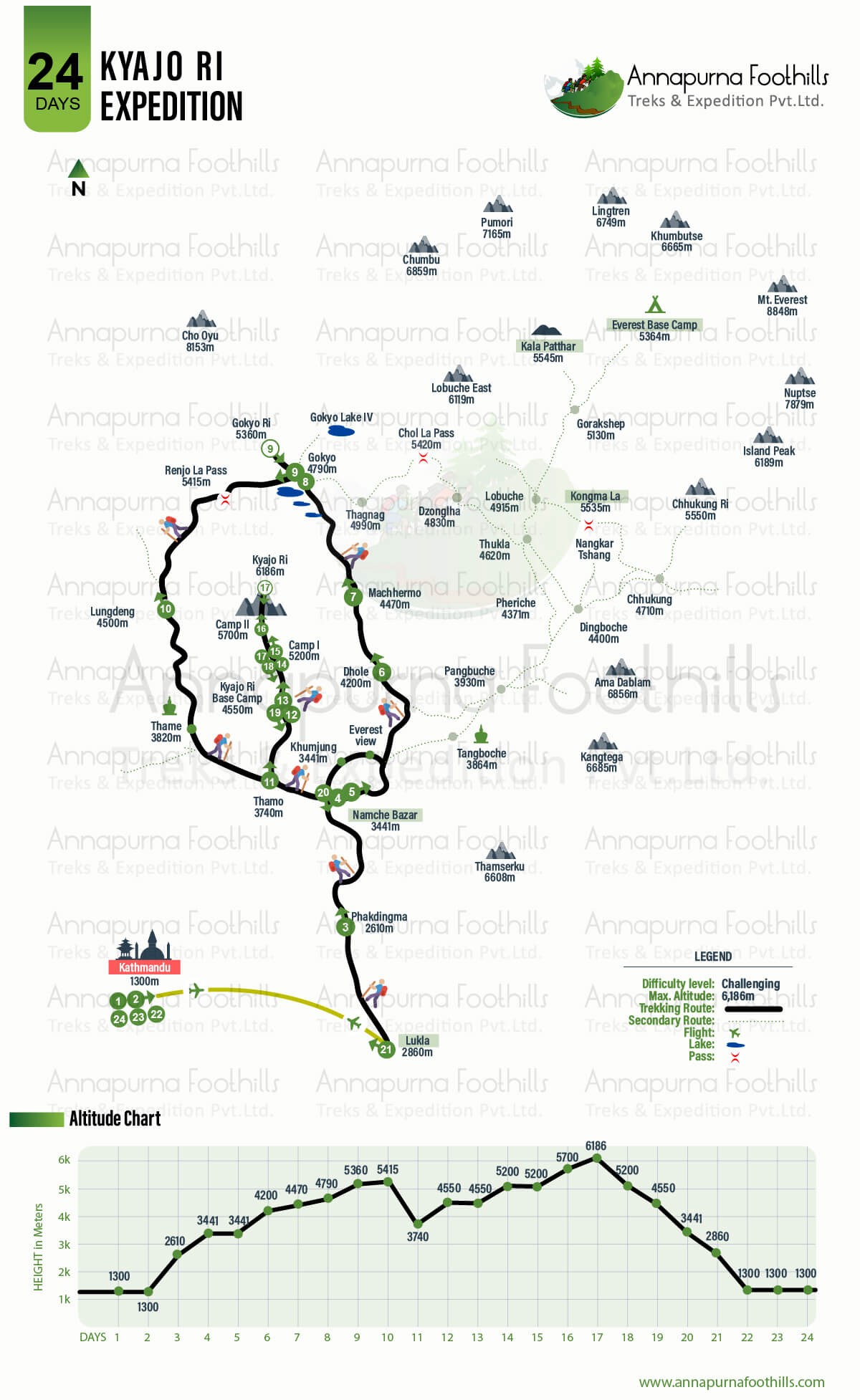About Kyajo Ri Expedition
Kyajo Ri (6186m), is a full scale expedition climbing peak. It is significantly harder, physically and technically than other popular trekking peaks such as Island Peak or Lobuche East or Mera Peak, which are comparatively easier ascent to the summit. Kyajo Ri is the highest summit on the southern part of Khumbu Himal ridge that runs north of Namche Bazaar. Government of Nepal only opened Kyajo Ri peak for climbing in 2002. Until now, this amazing peak has attracted little attention, and still has the feel of an unexplored peak as the route is free of fixed rope and anchors.
The trek into base camp is a pleasure in itself while at the same time providing the necessary acclimatization for the climb. Our Kyajo Ri Expedition starts with a scenic flight to Lukla. It follows the main "Everest Base Camp Trekking Route" as far as Namche Bazaar. The trek to base camp is not overly difficult for fit and experienced trekkers, perhaps a bit harder than the Kala Pattar climb near Everest Base Camp.
We continue the Everest Base Camp Trekking Trail till Kyanjuma village then we leave the main route and head up the Gokyo valley to the Renjo La, 5388 m, a high pass from where we enter the Thame valley. The trek through Gokyo valley is just majestic. The combination of turquoise lakes, mountains, hiking trails, Local Sherpa community makes this route a wonderful trekking trail. Renjo La Pass offers one of the best Panorama view of the Khumbu Himalaya and is also a great acclimatization climb. We descend into the valley to reach Mende, where we leave the main trail and enter the remote valley of Kyajo Drangka, where we set up our Base Camp at south of Kyajo Ri.
Kyajo Ri is a challenging expedition with significant technical rock and ice climbing at high altitude. The normal approach via the SW Ridge requires two more camps above Base Camp. Climbers on this expedition need to be in excellent physical condition and should have basic mountaineering skills, rock and ice climbing experience.
Kyajo Ri Climbing Route Overview:
Base Camp 4550m to Camp I 5200m: It is reached by crossing rough moraine. Just at the bank of Glacier Lake.
Camp I to Camp II, 5700m: It is not so far but it is strenuous as the glacial terrain is rough with talus and giant boulders. Camp II is on a snowy col. Some groups attempt the summit from Camp I itself. Depending upon the route and feasibility of camping at Camp II.
Camp II to Summit: Above Camp II, there is a belayed climbing using fixed rope on snow slopes of 50° to 55° up to the exposed and pointed summit. We will belay, lower and rappel the same route on descent. Summit day is comparable to summit day on Ama Dablam.
You may also be interested in: Kyajo Ri Climbing Short Version 17 Days
You may also be interested in: Pachermo & Kyajo Ri Expedition- 29 Days
The best season for Kyajo Ri Climbing is from March to May (Spring) and from September to November (Autumn). However, winter is also a great time to climb if you are well prepared for the cold weather. In the crisp and cold month of December, the views of the mountains are crystal clear and there are fewer tourists around. The duration of the Kyajo Ri Climb can be lengthened or shortened according to your preference. Annapurna Foothills Treks and Expedition will arrange every detail of your Kyajo Ri Expedition; lodge accommodation, food, as well as all the necessary climbing and camping equipment.
Planning to climb Kyajo Ri in 2025 and 2026 !!
Guaranteed Departure.. Please get in touch for further details.











